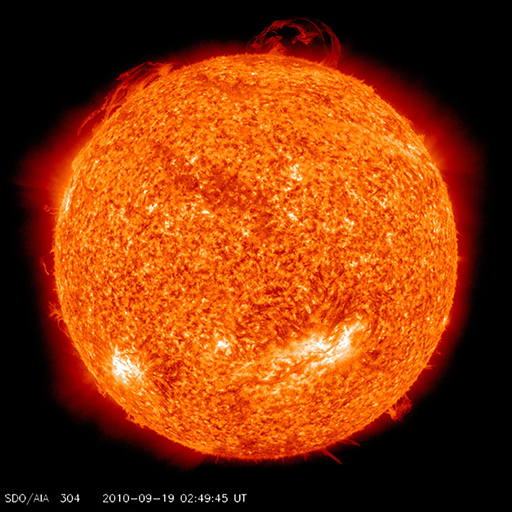2 The Sun as an ordinary star
So far, you have looked at Messier objects and stars, and learned about the magnitudes and positions of stars in the night sky. This week, you will concentrate on a daytime object – the Sun.
Our own Sun is in fact also a reasonably normal star and looks very different only because it is much closer to the Earth. If you imagine looking back at our solar system from a vast distance (such as from a planet orbiting another star), the Sun would appear as a tiny point of light – one more star among the many other stars making up the constellations.
The distance between stars is immense – Alpha Centauri, the next nearest star to our Solar System, is approximately 270 000 times further away than the distance from the Earth to the Sun. Being relatively so close to us means that the Sun is the one star that we can study in detail.
Although the stars vary greatly in properties – such as size, brightness, age and temperature – the Sun is actually a fairly typical star in the stable middle part of its life. This means that by studying the Sun and finding out how it works we can learn a lot about the processes that make all of the stars shine.

Study note _unit6.3.1 Safety – never look directly at the Sun
In this course you will not be asked to make any visual observations of the Sun.
It is never safe to look directly at the Sun because the intense light and heat could injure or permanently damage your eyes. For this reason you should avoid looking directly at the Sun, even for an instant, and you should never look at the Sun through any kind of optical instrument such as a telescope, binoculars or a camera.
